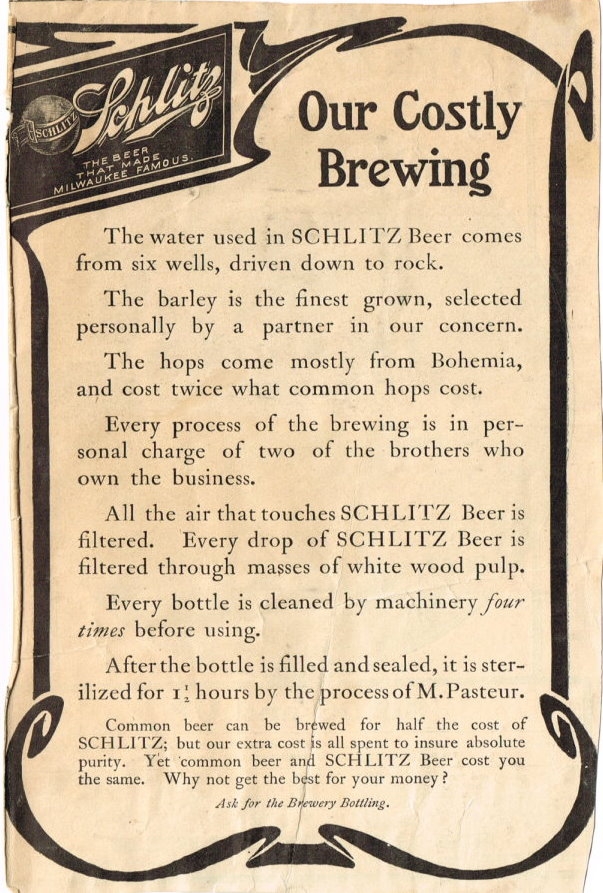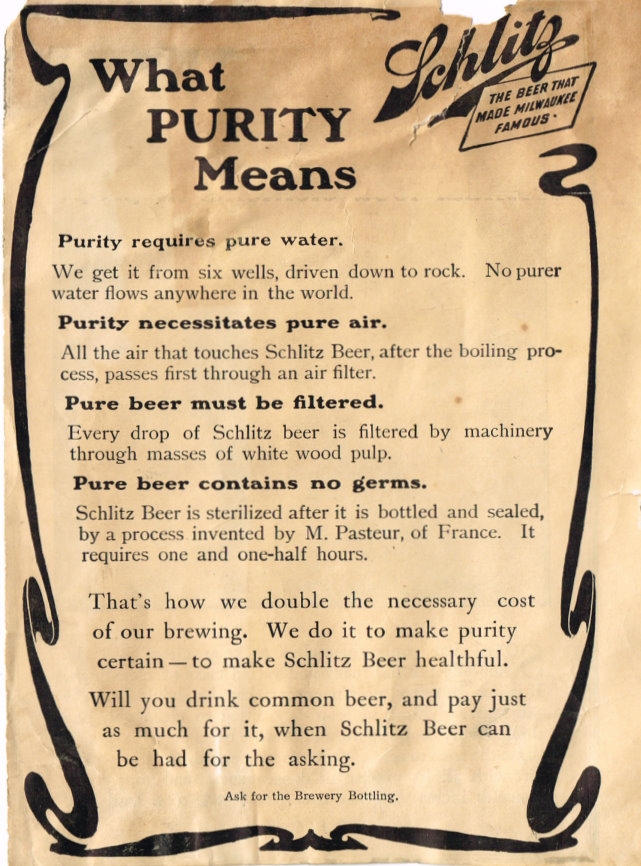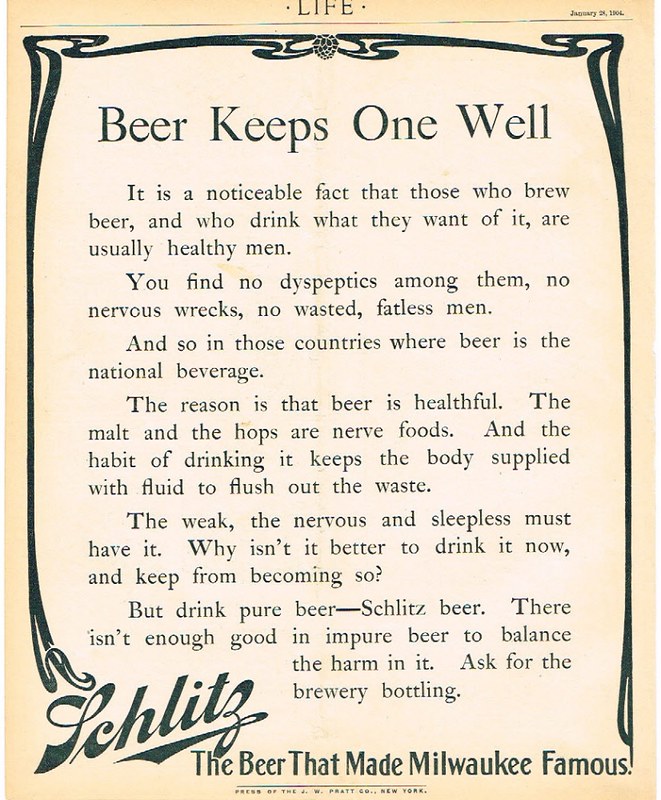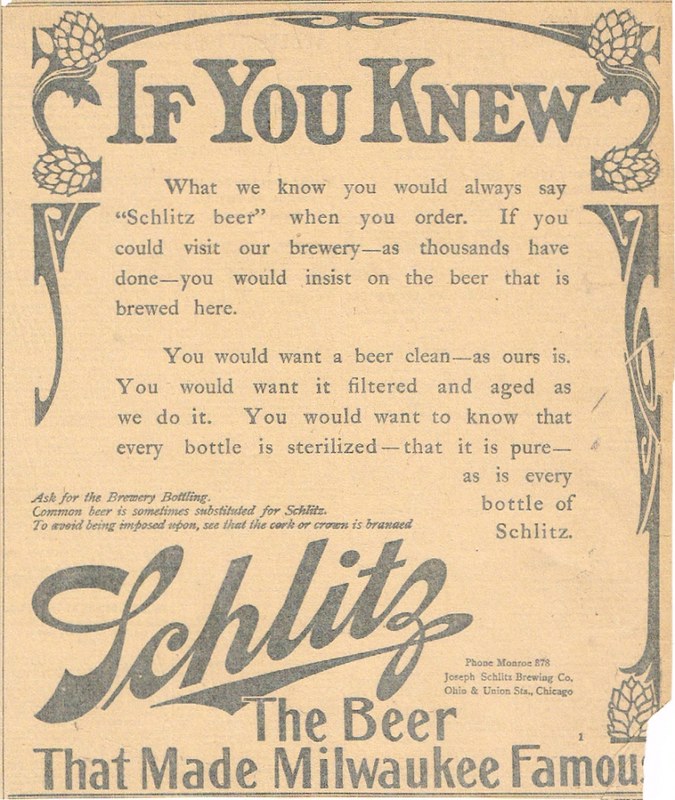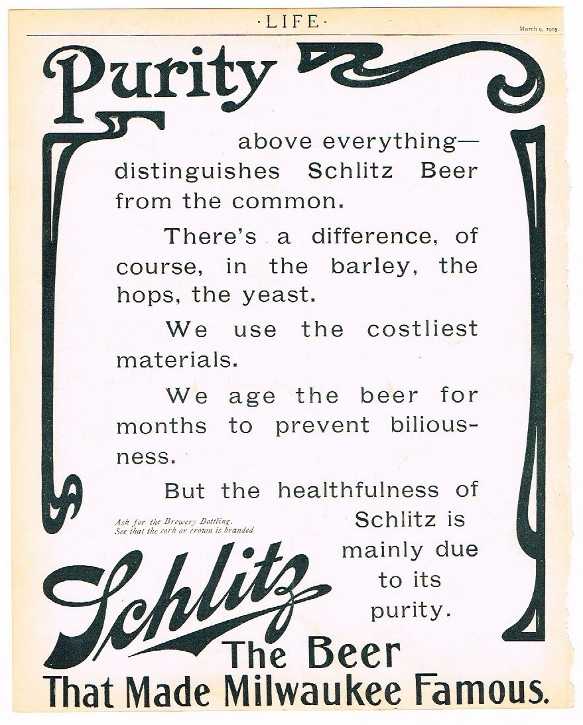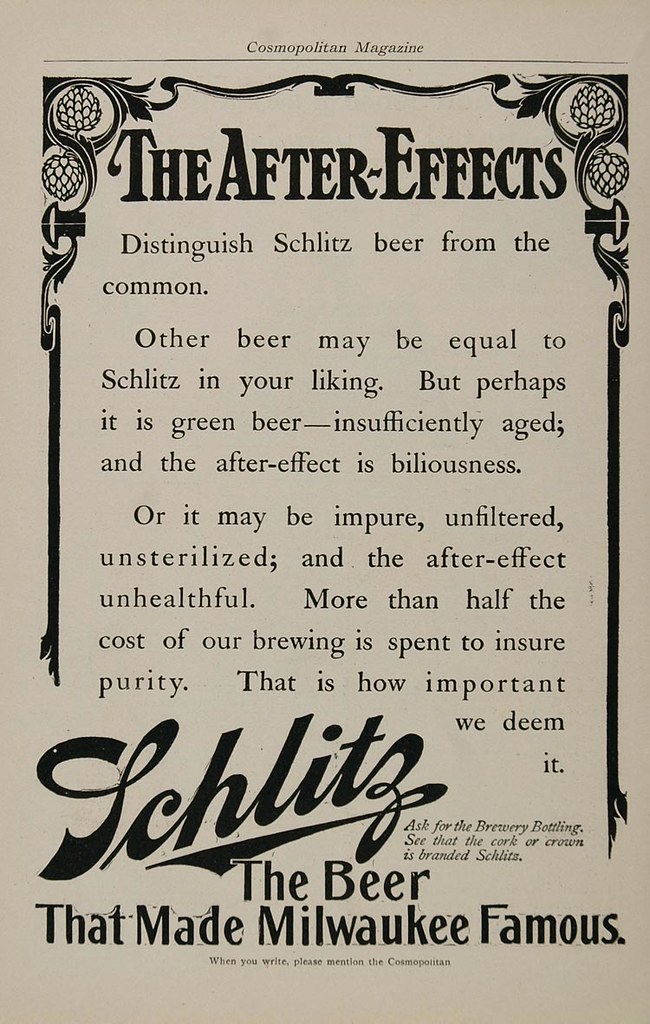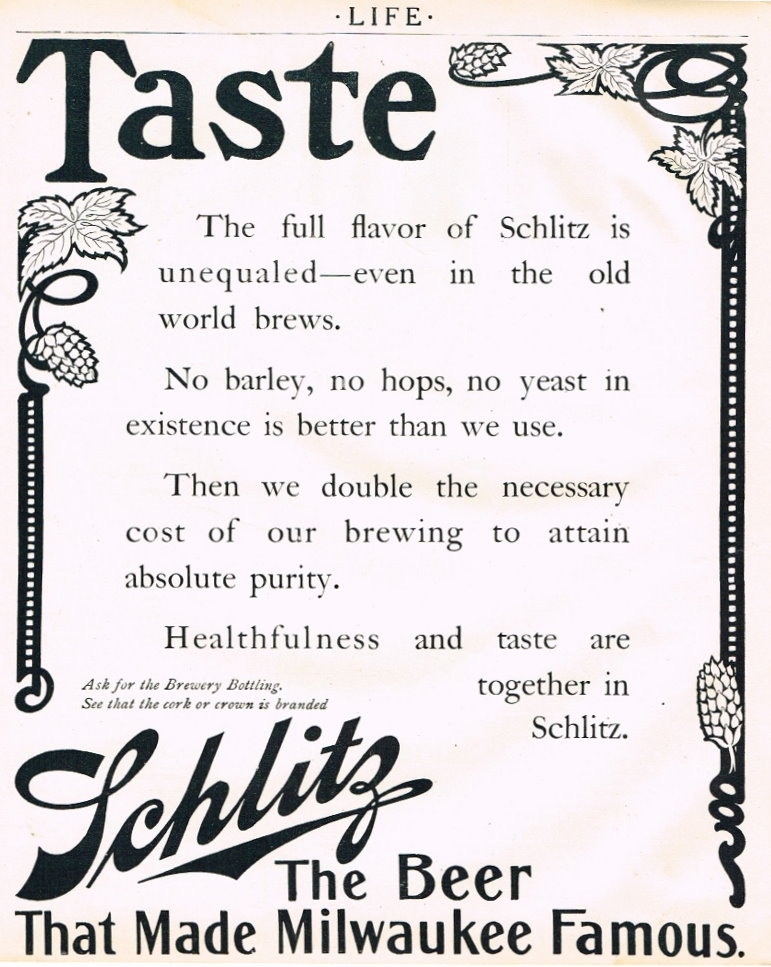
Thursday’s ad is for Schlitz, from 1903. In the first decade of the 20th century, Schlitz Brewing, then one of the largest breweries in the U.S. after the industry had shrunk from over 4,000 to around 1,500 in just 25 or so years, did a series of primarily text ads, with various themes. In this ad, Schlitz details why each ingredient in their beer is so expensive or why their brewing and bottling process is similarly so expensive. For example, “Every bottle is cleaned by machinery four times before using,” which seems pretty inefficient. Why not just buy the machine that cleans the bottles properly the first time?
